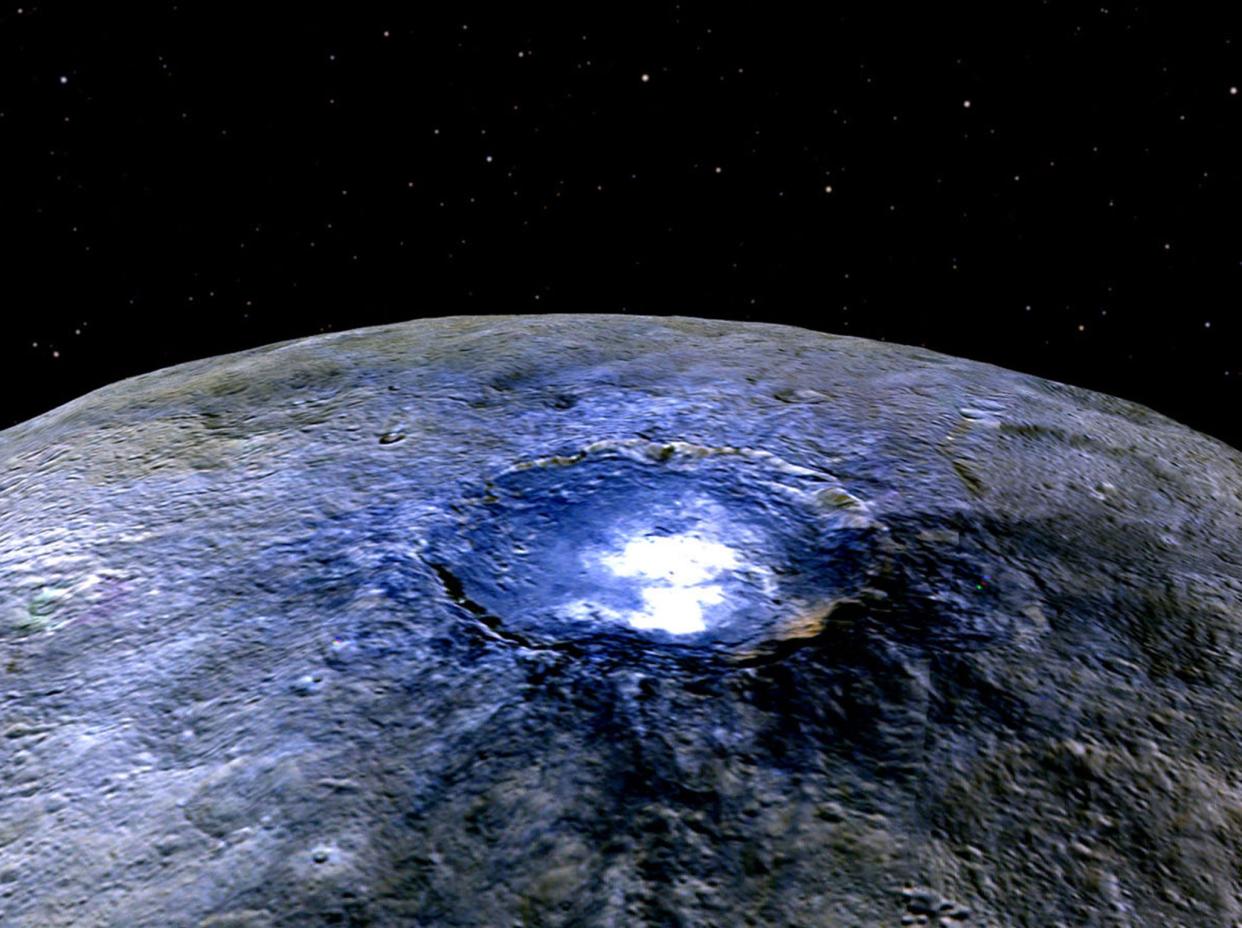Nasa reveals first findings after journey to mysterious ocean world in asteroid belt

Nasa has revealed its observations from a trip to Ceres, the mysterious world in the asteroid belt.
Ceres is a dwarf planet, and the largest of the huge number of objects that are found in the ring of rocks between Mars and Jupiter.
Now scientists using data from Nasa observations of the world have revealed a host of new information about that distant dwarf planet.
Ceres is roughly 600 miles wide, and lies less than three times as far from Earth as the Sun. As such, it is distant from us but close enough to experience the sun's warmth.
Such worlds are one of the various hopes for finding life in our solar system, and scientists have suggested that the latest findings will help inform the search for alien life on dwarf planets such as Ceres.
"Long believed to be a primitive body, Ceres is now an ocean world with deep brines at a regional and potentially global scale," wrote Nasa's Julie Castillo-Rogez, a planetary scientist who did not work on the study. She urged more research and a follow-up mission that could study the evolution of the planet – and its "potential habitability".
The new results come from the Dawn spacecraft, which orbited around Ceres from 2015 to 2018, when it ran out of fuel. Just before it did, it orbited right above the surface of Ceres, focusing on the Occator crater, a 20-million-year old feature that was seen to be emitting a strange glow.
The research shows that Ceres is an ocean world, and that it may have been geologically active in the recent past.
And it also adds yet more wonder to the planet, suggesting that the various glowing parts of the surface were formed from different sources.
The findings are discussed in seven new papers published in Nature journals, offering a variety of new information about the dwarf planet.
Researchers found, for instance, that there is a large saltwater reservoir beneath that bright, glowing crater.
The reservoir could have been mobilised by the impact that made the crater in the first place, and helped leave the salt deposits that are now on the planet's surface and create the strange glow.
In another paper, researchers report that there are hydrated chloride salts in the middle of the crater, at its brightest point. Such salts usually dry out quickly, suggesting that new brine is being pushed up through the surface and that there may still be salty fluids found inside Ceres.
Another paper suggests that Ceres has only recently stopped undergoing a period of activity from ice volcanoes, which began nine million years ago.
And yet more research shows that the mounds and hills found in the crater could have been formed after water flows – created by the original impact – froze over. Such behaviour has only been seen on the Earth and Mars before, and also indicates that Ceres would have been active until relatively recently.
Read more
World in our own solar system is 'rich in organic matter', says Nasa


